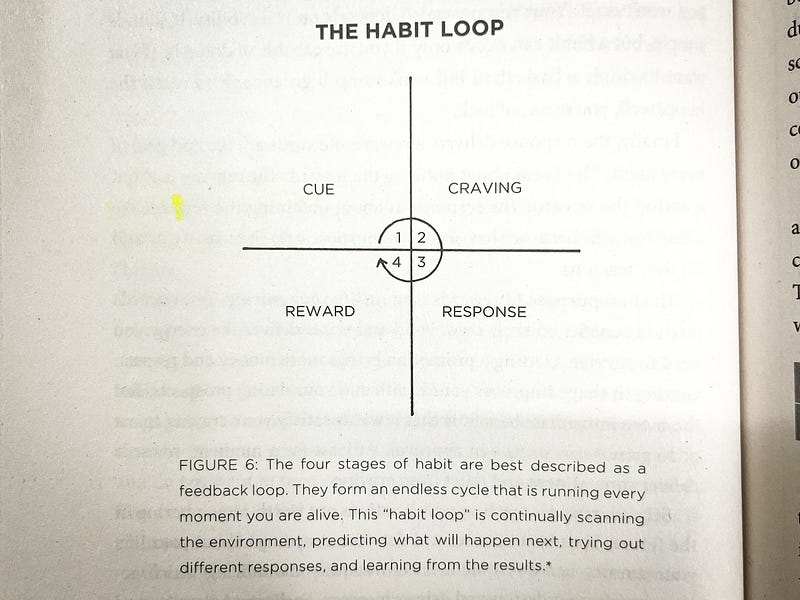Why This Bestselling Self-Help Is Worth Your Time
My Review and favourite tips from Atomic Habits

There have been a multitude of best-sellers these past years, and as someone overwhelmed with what to read, I realised that not every book is worth one’s time. I shifted my reading from normal books to Eastern fiction to avoid this confusion and started enjoying them. But for the past few days, I have wanted to give normal books a shot.
And man, there are a lot of books I was recommended. In non-fiction, I was recommended Atomic Habits by James Clear, Deep Work by Cal Newport, Sapiens, Influence by Robert B. Cialdini, Show Your Work by Austin Kleon, On Writing Well by William Zinsser and many other amazing books. Looking at that list makes me overwhelmed and inspires me to keep reading.
Today, I want to share how amazing the Atomic Habits is with you.
Introducing the book!
There are two kinds of books in the self-help genre. One sells you a promise of change, and the other sells you the technique that works in the present. This categorisation is not binary. Instead, it’s a spectrum. Atomic Habits is one of those rare books in the middle of this spectrum.
It offers practical advice that works in the present that can guarantee change. The best thing is that it’s not too overwhelming. The concepts we discuss and the tips given are very easy to relate to and integrate into our daily lives.
I am surprised that not many people read this book despite everyone knowing about it. It’s like one of those TV shows everyone knows but not everyone has watched past the first season. If you still haven’t read this book, you should give it a shot.
The setting
I was initially confused as to why this book was simple. It starts with the author’s own life as a baseball enthusiast who lost many opportunities due to an accident. Yet, this accident has helped him learn about atomic habits, while his perseverance has helped him get back into baseball.
This story might not seem relevant to the book, but it sets the setting and is a trust factor. Many books ignore this point. But, for non-fiction, once the reader understands where you’re coming from or who you are, the rest of the book feels like a friend’s advice than a teacher’s lecture. (no offence to those amazing teachers)
My favourite tips from the book.
As the title suggests, this book is about making habits that stick. In this regard, the book offers many techniques. Each technique is used in different phases of building a habit. Ultimately, the author divides the habit-building into 4 phases.
- Cue– the trigger to a desire. Example: A pizza advertisement
- Craving– the desire to do something. Example: Wanting to eat a pizza
- Response– the action you take to satisfy the craving. Example: Ordering a pizza.
- Reward — the result of the response. In the current example, it’s the taste of that pizza.

Each phase has a central technique, either developed or simplified, to make it more practical and easy to use. I have three major favourite points that I always keep in mind.
1. Each new habit is merely a way to build and solidify your identity.
The goal of any habit is to change something. But, the habit is easier to integrate if you desire a definite identity. It’s slightly confusing to differentiate between a goal and an identity. So, let me give you an example. Wanting to lose weight is a goal. Becoming a healthy person is an identity. Wanting to read books is a goal. Becoming a reader is an identity.
This might feel like sophistry to some, but as someone who stopped many interests with little to no results, I can assure you. This is more important than it gives off.
2. Point-and-Shout
This technique is from the Japanese railway industry, where they point at everything and shout aloud to ensure everything is fine and they’re not missing anything. That doesn’t mean the rest of the world doesn’t know about this. Do you remember every time before you go on a trip, you’d double check if your essentials? That’s point-and-shout.
You make the unconscious part of packing a bag into a conscious one when you start to double-check. What happens when you do this every time you plan to order food? Would you still order junk food while trying to lose weight?
In my case, it has reduced ordering food from outside by 90% in the last few weeks. Every time I wanted to eat, I’d point at the ingredients I had and shout that I was ordering food. Suddenly, I’d cook something rather than order something. That’s how simple this 5-second break is for your habits. Try it out once, and share what you found.
3. Motion vs Action
When discussing the Response section, the author refers to an interesting behaviour in a photography assignment by Prof. Jerry Uelsmann. This assignment divided students into two groups. One group was evaluated based on the number of photos they took, while the other was evaluated based on the quality of their best photo.
Surprisingly, many submissions from the quantity group had better-quality photos than the ones from the quality group. The author extrapolates this to all the different habits.
Motion is the actions that give us a “feeling” of progress without actual progress. It’s like pondering over the hypothetical qualities of the “best” photo. It’s pondering how the best article is written before writing an article.
The action, however, refers to the work that we do to see progress. To write better articles, you start by writing one crappy article. To take the best photos, you start by taking crappy photos.
Why is this important to me? Well, I was undoubtedly in the quality group, a perfectionist. I wasted a lot of time thinking about how to do best something rather than doing something. Though I must be honest, I realised this not from this book but from learning to drive. I was afraid of causing an accident and avoided driving for years. Then, I realised how stupid I was when I started to drive.
The conclusion
I can go on and on about this book and the tips the author shares with us. But I have done that in more detail in my other articles. I don’t see the point of doing that here. If you’re interested, please check them out and share your views!
This book is a must-read, even if you read it just for fun. Many things can change just by making simple changes to them! Give it a shot! If you have already done that, share what you found the most useful down in the comments.
Thanks for reading till the end! Follow The Story Taste if you’re interested in more such articles.
Until the next time! ✌️


